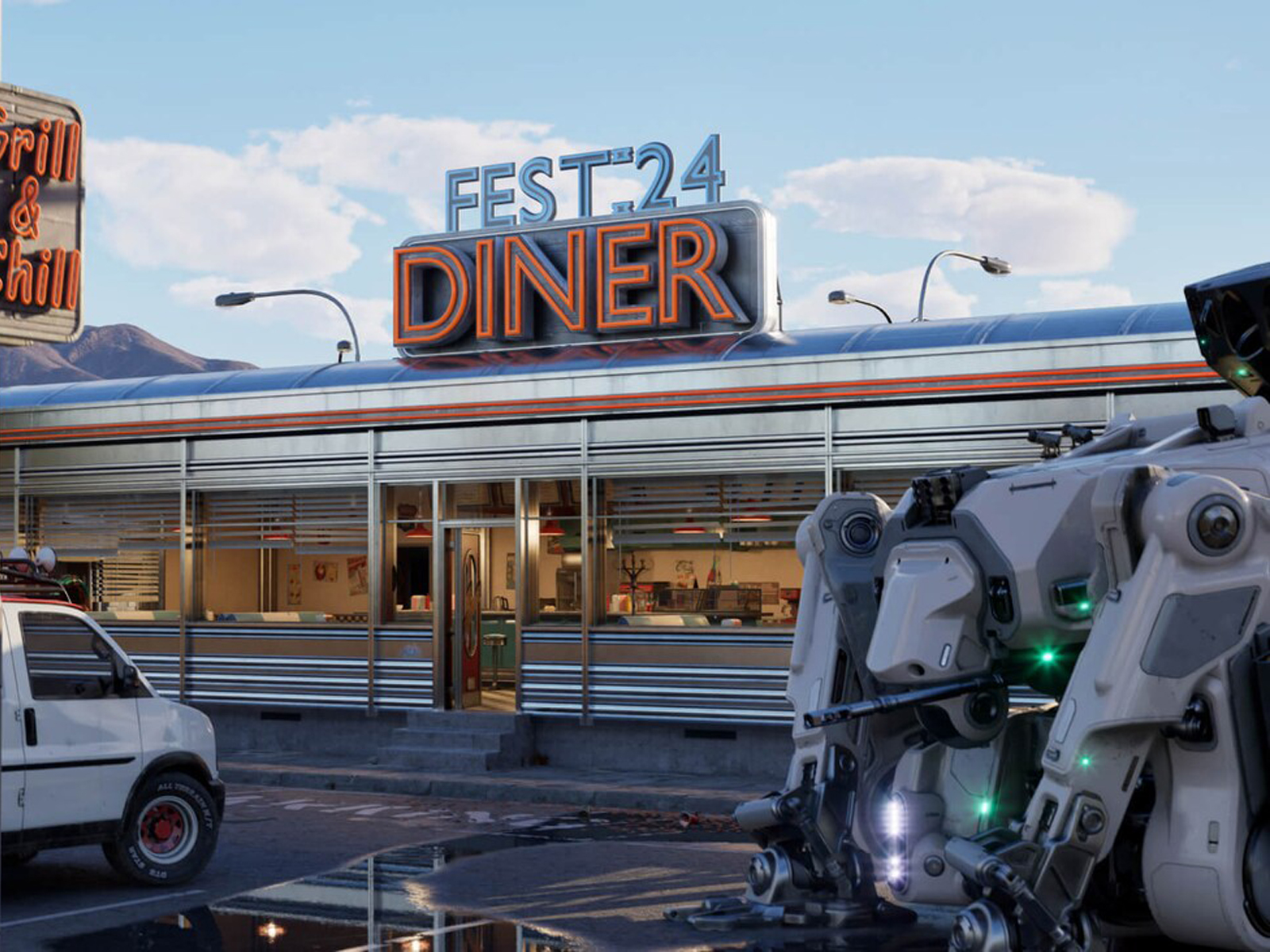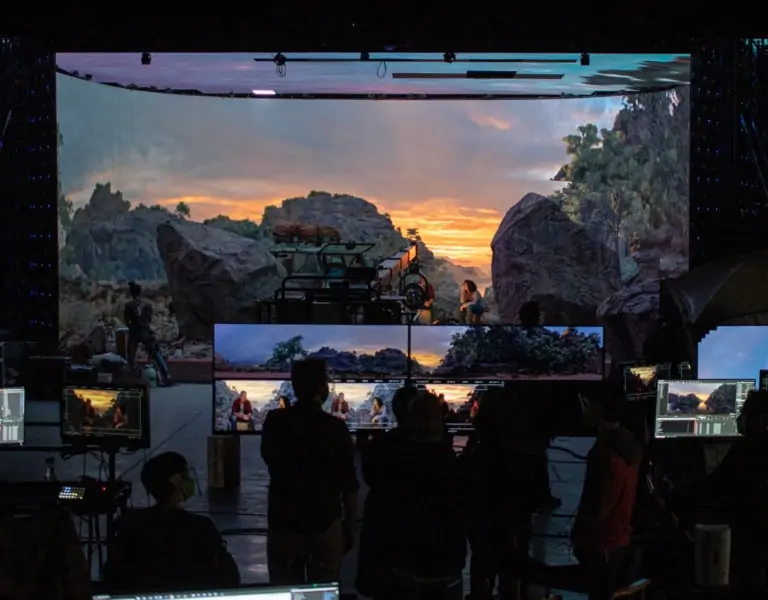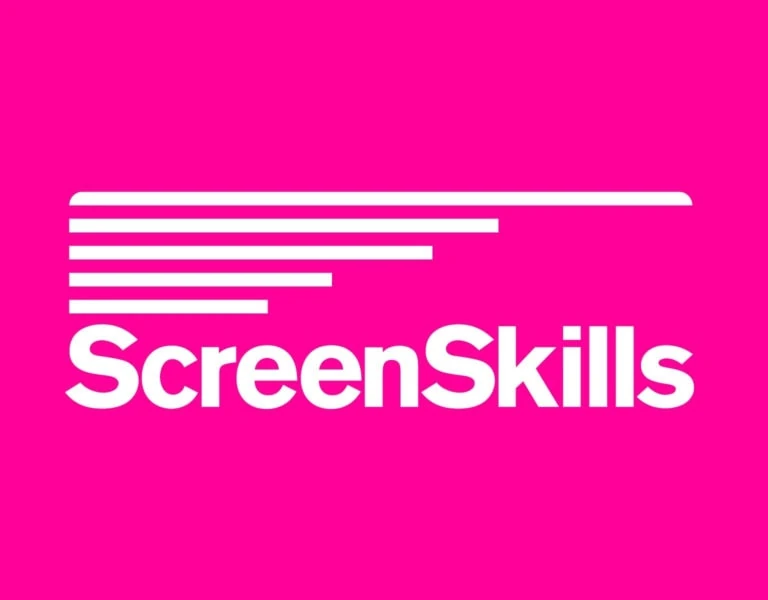Unreal Engine 5.5 is now available
Nov 14, 2024

Unreal Engine 5.5 is here, with significant advances in animation authoring, virtual production, and mobile game development, while many features in areas such as rendering, in-camera-VFX, and developer iteration reach production-readiness. Meanwhile, we continue to push boundaries with exciting new innovations like MegaLights. Here are some of the highlights.
Animation
UE 5.5 delivers new features and enhancements that facilitate high-fidelity in-editor animation authoring workflows, enabling you to reap the benefits of animating in context and reducing the requirement to roundtrip with DCC applications. There are also additions to the animation gameplay authoring toolset.
Sequencer
The release sees significant enhancements to Sequencer, Unreal Engine’s nonlinear animation editor, which now boasts a more controllable interface with better filtering and easier access to properties, reducing workflow fatigue and increasing productivity.
We’ve also added nondestructive animation layers, providing the additional control and flexibility previously only found in traditional DCC applications; this includes the ability to easily manage the contents, choose between additive or override, and animate the weights of these layers.
Finally, it’s now easier to set up different dynamic cinematic scenarios to be triggered interactively, such as conditional state changes based on player choices during interactive cinematics, or custom bindings for more nuanced control of objects within gameplay cinematics. You can also warp a sequence’s timing using a curve, and reposition the origin of a subsequence or shot.
Animation deformers
You can now craft more realistic animation effects such as contact deformation or better cartoon-style squash-and-stretch, with the new ability to author animatable animation deformers inside Control Rig and easily apply them to characters in Sequencer with a single click.
There’s also an Animator Kit plugin containing a collection of ready-made Control Rigs with built-in deformers—including Lattice, Camera Lattice, and Sculpt—and a few Utility Control Rigs that you can use in your animations or as examples for building your own rig-driven deformers or helper rigs.
Modular Control Rig
In addition, Modular Control Rig moves to Beta with many UI and UX improvements; new quadruped and vehicles modules; and support for common bipedal skeleton types, while the Skeletal Editor is now Production-Ready with improvements that include quicker and simpler workflows for painting and editing weights.
MetaHuman Animator
Part of the MetaHuman Plugin for Unreal Engine, MetaHuman Animator also receives a significant upgrade in this release. Introduced as an Experimental feature, it’s now possible to generate high-quality facial animation—including inference of upper face gestures—just from audio performances. The fully local, offline solution works with various voices and languages and can be batch-processed and scripted alongside other MetaHuman Animator inputs.
Mutable character customization
Game developers whose projects require content that changes dynamically at runtime will welcome the addition of the Mutable character customization system. The system can be used to generate dynamic skeletal meshes, materials, and textures for characters, animals, props, weapons, and more, while optimizing memory usage, keeping shader cost low, and reducing the draw call count.
Unlike native tools for modifying content at runtime, Mutable supports deep customization that involves many parameters and texture layers; complex mesh interactions; and texture effects that are not GPU-friendly.
You can explore Mutable’s features in the corresponding sample project, which will be available in the next few days.
Choosers
In addition, Choosers move to Production-Ready. Offering a framework for selecting animations for playback based on game context without having to write complex logic, this robust game context asset selector can now be used to select nearly any type of asset; this can encompass multiple levels of complexity, from simple random selectors to database-driven logic involving thousands of animations.
You can try out these features in the updated Game Animation sample project.
Rendering
On the rendering front, we continue to deliver on the performance and fidelity promises of UE5, while maintaining our goal of leading the industry on real-time rendering innovation.
Lumen
Lumen can now run at 60 Hz on platforms for which there is hardware support, thanks to many improvements to the systems that underpin hardware ray tracing (HWRT). These improvements also impact the performance and capabilities of Path Tracer and light baking.
Path Tracer
Speaking of Path Tracer, the DXR-accelerated, physically accurate progressive rendering mode is now Production-Ready, offering uncompromised quality for creating final pixels for nonlinear applications or fully-featured ground-truth reference images. This release sees a series of performance and fidelity improvements, Linux support, and support for all other Production-Ready features, including sky atmosphere and volumetric clouds.
Substrate
Meanwhile, Substrate, the material authoring framework introduced as Experimental in Unreal Engine 5.2, moves to Beta. All features of legacy materials are now supported, as are all platforms to which UE deploys. While there’s ongoing work to fully optimize Substrate for real-time applications, it can now be considered fully ready for nonlinear material production; look dev artists can leverage its powerful and flexible framework to get more control over the look and feel of their objects.
Movie Render Graph
Introduced as Experimental in Unreal Engine 5.4, Movie Render Graph (MRG) also moves to Beta in this release, with further investment in the graph-based configuration workflow. This has yielded workflow improvements, such as the ability to use custom EXR metadata; refinements based on initial user feedback, including support for Spawnables in Collections; and improved parity with the legacy preset configuration, for example, Object ID support.
In addition, all asset types are now fully supported in MRG’s Render Layers feature, including translucent objects, Niagara FX, Heterogeneous volumes, Landscapes, and Sky Atmosphere without the requirement to use a Sky Sphere.
Finally, MRG provides access to an Experimental new spatio-temporal denoiser for Path Tracer, yielding high-quality results for linear sequences.
MegaLights
This release also offers a sneak peek at an Experimental new feature we’re calling MegaLights. Already being dubbed “the Nanite of lights,” MegaLights enables you to add hundreds of dynamic shadow-casting lights to your scenes, without constraints. Lighting artists, for the first time, can freely use textured area lights with soft shadows, Light Functions, media texture playback, and volumetric shadows on consoles and PC, focusing on artistic considerations rather than performance impact.
Virtual production
Unreal Engine is at the forefront of the virtual production revolution, with its dedicated in-camera visual effects (ICVFX) toolset powering a myriad of productions in film, television, and commercials internationally. UE 5.5 sees the accumulated investment across multiple releases bringing the ICVFX toolset to full production-readiness, as well as advances in other features for virtual production and visualization.
SMPTE 2110
Case in point is Unreal Engine’s support for SMPTE 2110. With numerous stability improvements; automatic detection and repair of framelock loss; the ability to use PTP as a timecode provider; OCIO support for 2110 media; and other improvements to IP video signal flow, it’s ready to meet the needs of the real-world ICVFX projects as they make the transition to SMPTE 2110 deployments.
Camera Calibration
Also Production-Ready with UE 5.5 is the Camera Calibration solver, with drastically improved accuracy for lens and camera parameters estimation. Stemming from this work, Overscan is now built into all cameras, to support use cases like rendering with lens distortion or adding camera shake in post.
Virtual Scouting
Next up on the Production-Ready front is the updated Virtual Scouting toolset introduced in UE 5.4, offering a powerful out-of-the-box experience using OpenXR-compatible HMDs (with Oculus and Valve Index supported by default), and new opportunities for customization via an extensive API. The toolset now also features a new VR Content Browser and asset placement; a Transform Gizmo that is customizable via Blueprint; and further polish, including a color-correct Viewfinder.
Color Grading Panel
Previously part of the ICVFX Editor, the Color Grading Panel has been made available for general use in the Unreal Editor, providing a rich, artist-friendly interface for creative color manipulation in any Unreal Engine scene. Offering an enhanced color grading experience for all artists—not just those working with nDisplay—the panel now also supports post-process volumes, cine cameras, and color correction regions.
DMX
With applicability not just within virtual production, but also in broadcast and live events, Unreal Engine’s DMX tech stack joins the list of Production-Ready toolsets, with enhancements to the Control Console, Pixel Mapping, and Conflict Monitor.
This release also adds GDTF compliance to the DMX Plugin for interfacing with GDTF- and MVR-enabled control devices and software, among several other enhancements.
Mobile game development
On the platform front, we’ve been investing in our support for mobile, with the aim of cementing Unreal Engine as the best engine for mobile and cross-platform AAA game development.
The Mobile Forward Renderer sees a slew of new features that will increase visual fidelity on the platform. It now supports D-buffer decals, rectangular area lights, capsule shadows, moveable IES textures for point and spotlights, volumetric fog, and Niagara particle lights. Screen-space reflections now work in both Mobile Forward and Deferred Renderers.
In addition, runtime automatic PSO (Pipeline State Object) precaching, introduced in Unreal Engine 5.4, is now enabled by default, offering a faster and easier alternative to the manual PSO gathering workflows.
Meanwhile, the Mobile Previewer sees several improvements to help with content development for mobile games in this release. These include the ability to capture and preview a specific Android device profile, and to emulate half-precision 16-bit float shaders, making it easier to detect and deal with artifacts.
Developer iteration
With Unreal Engine 5.5, we continue to evolve the foundation of Unreal Engine’s data processing pipelines to meet the growing scale and ambitions of creator experiences, with the understanding that faster developer iteration and efficiency leads to higher-quality results.
Introduced in Unreal Engine 5.4 as a new optimized cached data storage and network communication architecture, Unreal Zen Server is now Production-Ready* for deployment as a shared Derived Data Cache (DDC).
In this release, Zen Server can also now stream cooked data to target platforms, from PC and console to mobile. This Experimental new feature enables developers to more quickly and easily evaluate the look and behavior of their game on the target platform, from console to mobile, during development.
Several additional features also reach Production-Ready status in this release, including the Unreal Zen Loader, which offers an optimized asset loading path for editor systems and cook processes; the Unreal Build Accelerator (UBA)*, which delivers faster C++ and shader compilation; and Unreal Horde Continuous Integration and Remote Execution, bringing more efficient and scalable development workflows.
* Production-Ready status applies to Windows host machines; other applicable platforms are currently in Beta.
Fab integration
Last month, we announced that Fab, our new unified content marketplace, is now open for business. Fab is integrated into Unreal Engine 5.5, enabling you to drag and drop atomic assets, such as Quixel Megascans, directly into your scene. You can also add asset packs from Fab to your Content Browser.



















